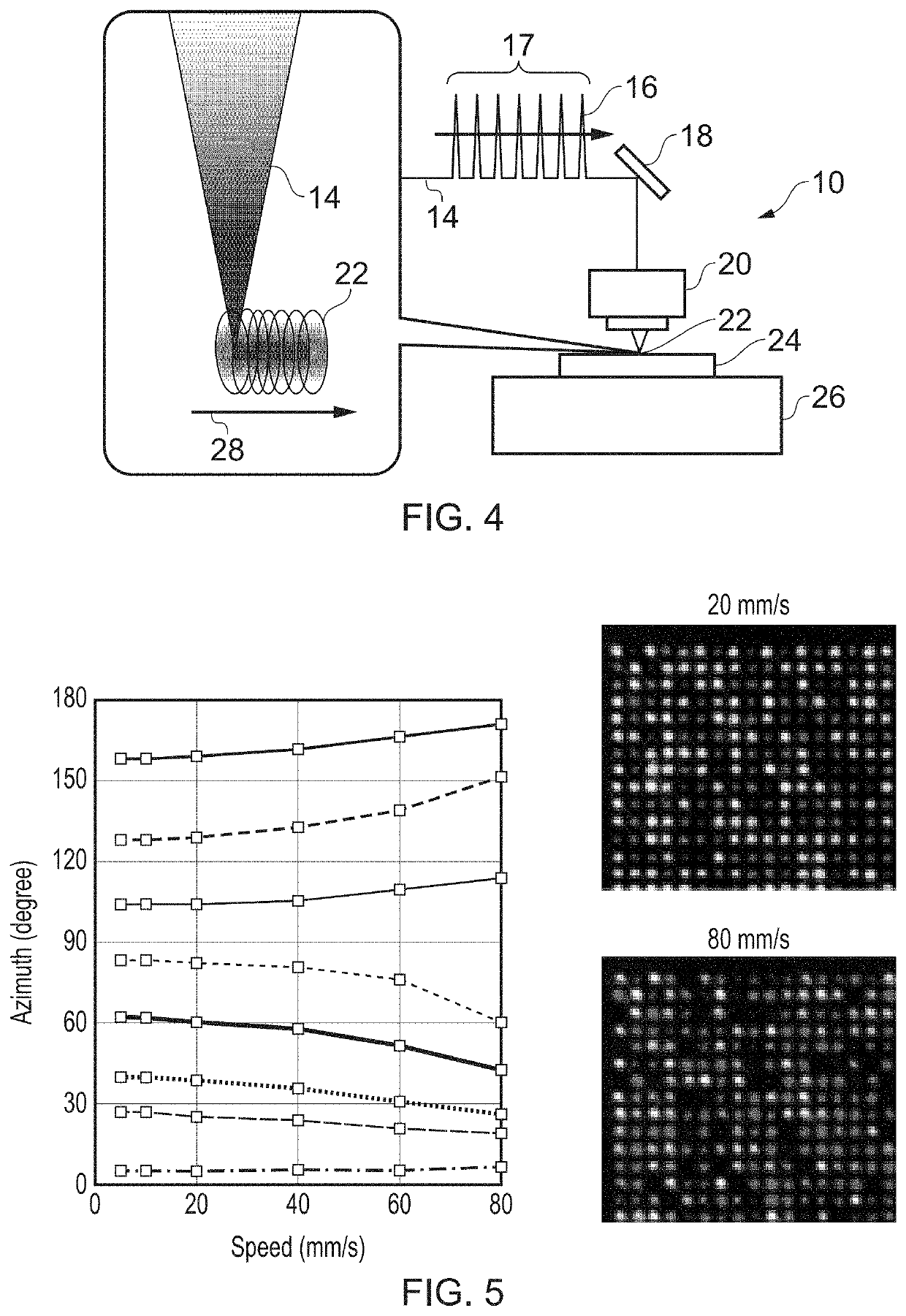Method of pulsed laser irradiation with reduced thermal damage
a pulsed laser and thermal damage technology, applied in the field of pulsed laser irradiation with reduced thermal damage, can solve the problem of reducing the voxel quality
- Summary
- Abstract
- Description
- Claims
- Application Information
AI Technical Summary
Benefits of technology
Problems solved by technology
Method used
Image
Examples
Embodiment Construction
[0025]Aspects and features of certain examples and embodiments are discussed / described herein. Some aspects and features of certain examples and embodiments may be implemented conventionally and these are not discussed / described in detail in the interests of brevity. It will thus be appreciated that aspects and features of methods discussed herein which are not described in detail may be implemented in accordance with any conventional techniques for implementing such aspects and features.
[0026]Embodiments of the present disclosure relate to methods for irradiating a substrate with laser pulses. As a particular example, the fabrication of nanostructured optical elements will be discussed. This application uses pulsed laser irradiation to form birefringent nanostructures in optical elements, for example elements for optically storing data or elements that use the geometric phase effect to modify the polarisation and / or phase of light. In the present disclosure, the term “optical eleme...
PUM
| Property | Measurement | Unit |
|---|---|---|
| first energy | aaaaa | aaaaa |
| energy | aaaaa | aaaaa |
| second energy | aaaaa | aaaaa |
Abstract
Description
Claims
Application Information
 Login to View More
Login to View More - R&D
- Intellectual Property
- Life Sciences
- Materials
- Tech Scout
- Unparalleled Data Quality
- Higher Quality Content
- 60% Fewer Hallucinations
Browse by: Latest US Patents, China's latest patents, Technical Efficacy Thesaurus, Application Domain, Technology Topic, Popular Technical Reports.
© 2025 PatSnap. All rights reserved.Legal|Privacy policy|Modern Slavery Act Transparency Statement|Sitemap|About US| Contact US: help@patsnap.com



